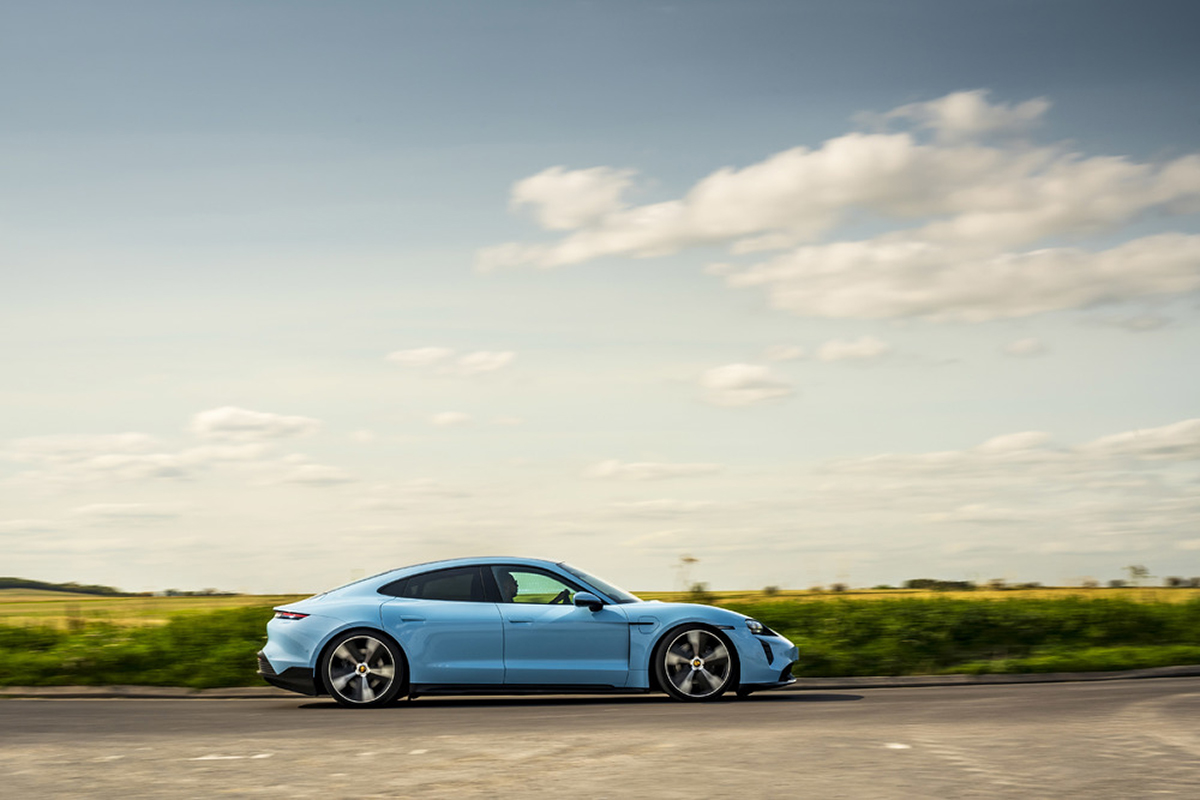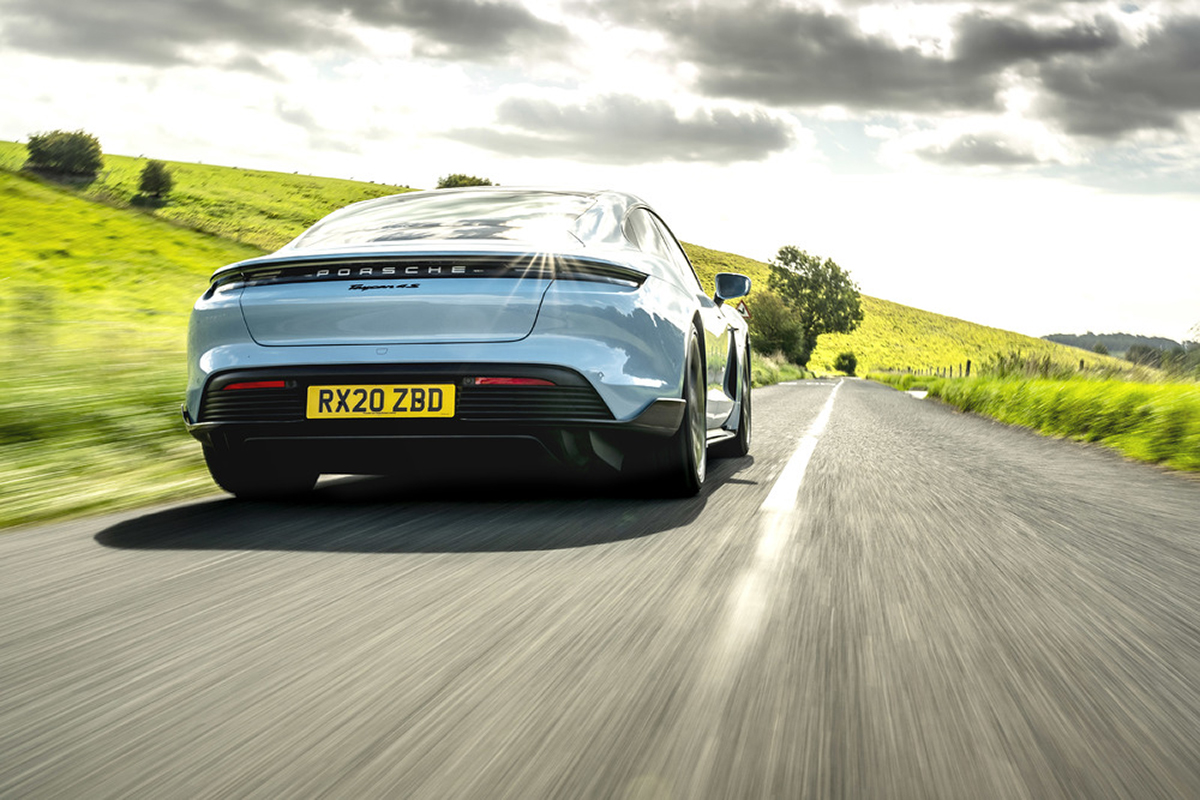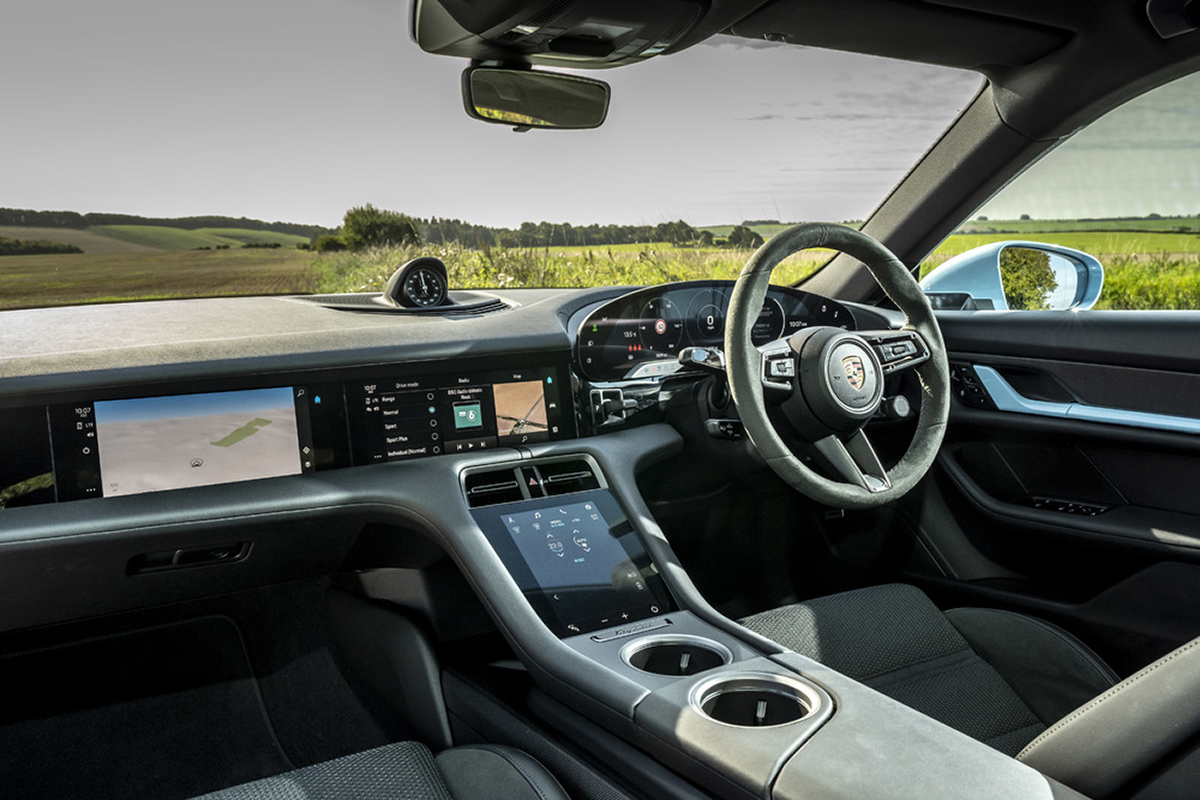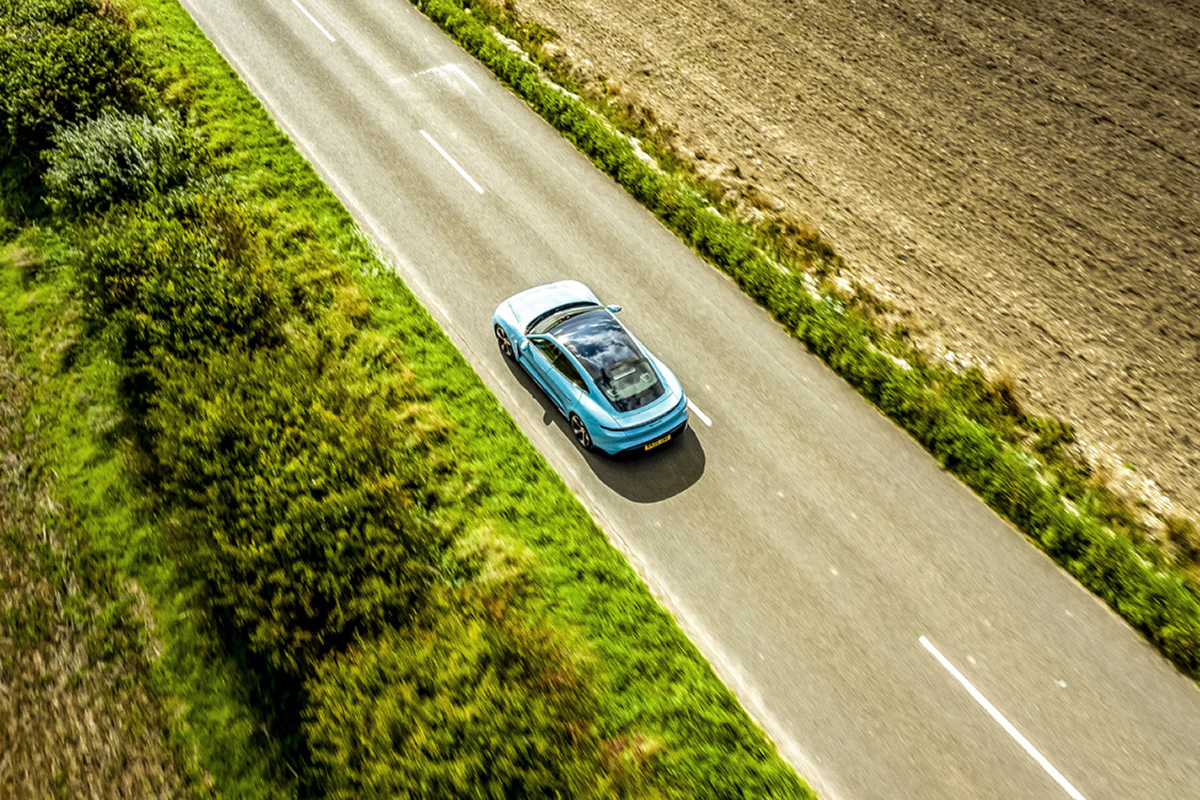It’s a familiar trope in Porsche circles today that less is very often more, particularly as ever greater performance gains make the marque’s flagship cars increasingly misaligned with real-world driving conditions. Porsche might risk painting itself into a corner, were it not for the fact that these halo cars need not be bought in big volumes, doing much of the heavy lifting for any given model line simply by being there.
So it is with the Taycan. At launch we were offered the Turbo and Turbo S, causing equal parts confusion and consternation because turbos were only noticeable by their absence. Regardless of exactly how, both of these cars nevertheless offered world-beating levels of all-electric performance, but did so at a significant cost relative to their rivals. Rival, singular, in truth.

The on-money competition for the well-established Tesla S, and the car most Taycan customers are likely to consider right now, is the 4S. Presently, the mid-level offering starts at £83,580 (including VAT), against £79,980 for the equivalent Tesla Model S. This compares with £138,830 for the Taycan Turbo S, a car that will hit 62mph in a genuinely astonishing 2.8 seconds, some 1.2 seconds faster than the 4S. But for a price tag that few would consider justifiable. The lesser car will still hit 100mph from standstill in under nine seconds; supercar territory in a practical four-door configuration. And even then I’m not convinced Taycan buyers are really in it for the headline figures and G-forces.
What the Turbo and Turbo S do both enjoy over the 4S is a superior battery, which not only offers greater range but also better recharging efficiency. This could have been an ace in the sleeve for the Turbos, but Porsche decided to make this very battery, officially called Performance Battery Plus, available to 4S buyers as a cost option. And it’s not an insignificant one, but the £4613 addition to your original £84K outlay is inconsequential in respect of monthly repayments but promises to be transformative in terms of day-to-day running and resale.

The standard single-deck Performance Battery is rated at 390kW, or 522bhp in old money, while the twin-deck Plus variant claims 420kW or 563bhp. It’s not a huge gain and acceleration and top speed go essentially unaffected by this extra power. However, the theoretical range rises from 253 miles to 288 miles, while the maximum peak charging capacity jumps from 225kW to 270kW, meaning you can fuel up faster on the road. The Taycan in any guise is operating on the margins of what is workable for most modern motorists in the market for a luxury performance saloon, with a real-world range closer to 200 miles in mixed driving, and for that reason every little helps. Neither 35 extra miles of range nor less time standing around in a service station can be sniffed at.
Much like its combustion-driven brethren, the 4S feels in no way an inferior product than the Turbo twins either. There are very subtle visual distinctions such as side sills and rear diffuser finished
in black, and it runs on smaller 19-inch wheels as standard with correspondingly smaller cast iron brakes. But it remains a striking car, comfortably the best resolved EV on the market in terms of styling. And the sense of quality, design and that amorphous Porsche-ness is still there
in spades. More so than ever before in some respects, since the Taycan seems to redefine that unique genetic strand, paving the way for future products with a reassuring ease and logic.

On the move, the 4S doesn’t give much away. It’s true that you don’t quite get that supernatural level of thrust that the Turbo and Turbo S both deliver with so little throttle travel. However, it’s still a phenomenally fast car in a straight line and just as composed in the corners, thanks to that inherently low centre of gravity and the full complement of onboard wizardry, with 4D Chassis Control, Adaptive Air Suspension and Porsche Active Suspension Management as standard. Steering feel remains one of the car’s real highlights; its weight and precision so perfectly Porsche. The brakes, even here, make light work of what, let’s face it, is anything but in a two-tonne car, and the chassis offers an impressive balance between focus and compliance over faster, undulating B-roads. It’s not perfect, but it’s a better compromise than anyone else is managing right now in the perennial conflict between optimal chassis dynamics and excessive but unavoidable mass.

For the time being then, the Taycan to have is unquestionably the 4S. What it loses in performance it more than makes up for in competitive market positioning, and no one should entertain the illusion that this is somehow a lesser car for not being the Turbo. By any meaningful metric it really isn’t. The eventual arrival of the rear-wheel-drive Taycan, a car that is already on sale in China, might mean a further price reduction, even a modest weight reduction and potentially even better driving characteristics, but that remains to be seen. Until that time, the 4S will take some beating.